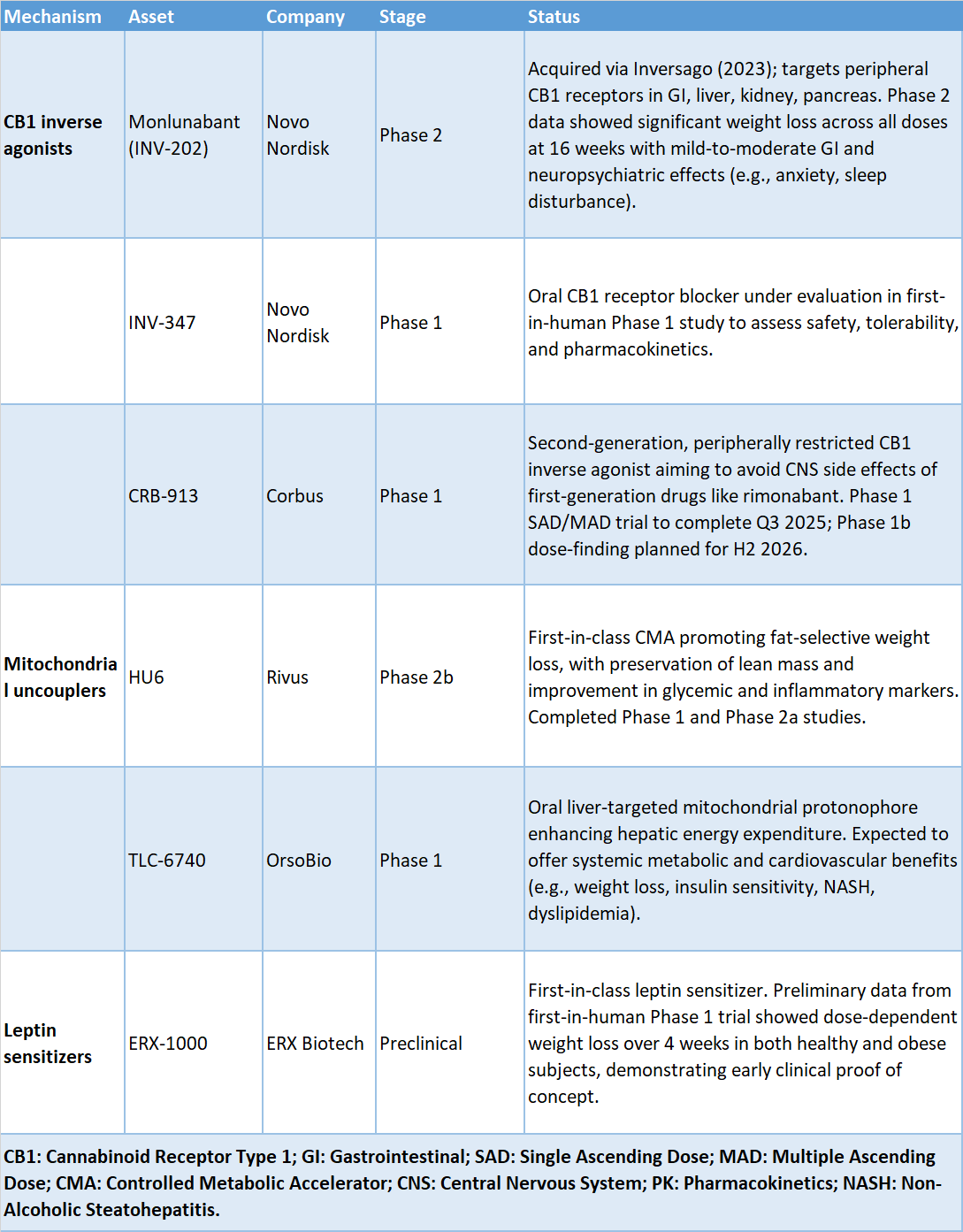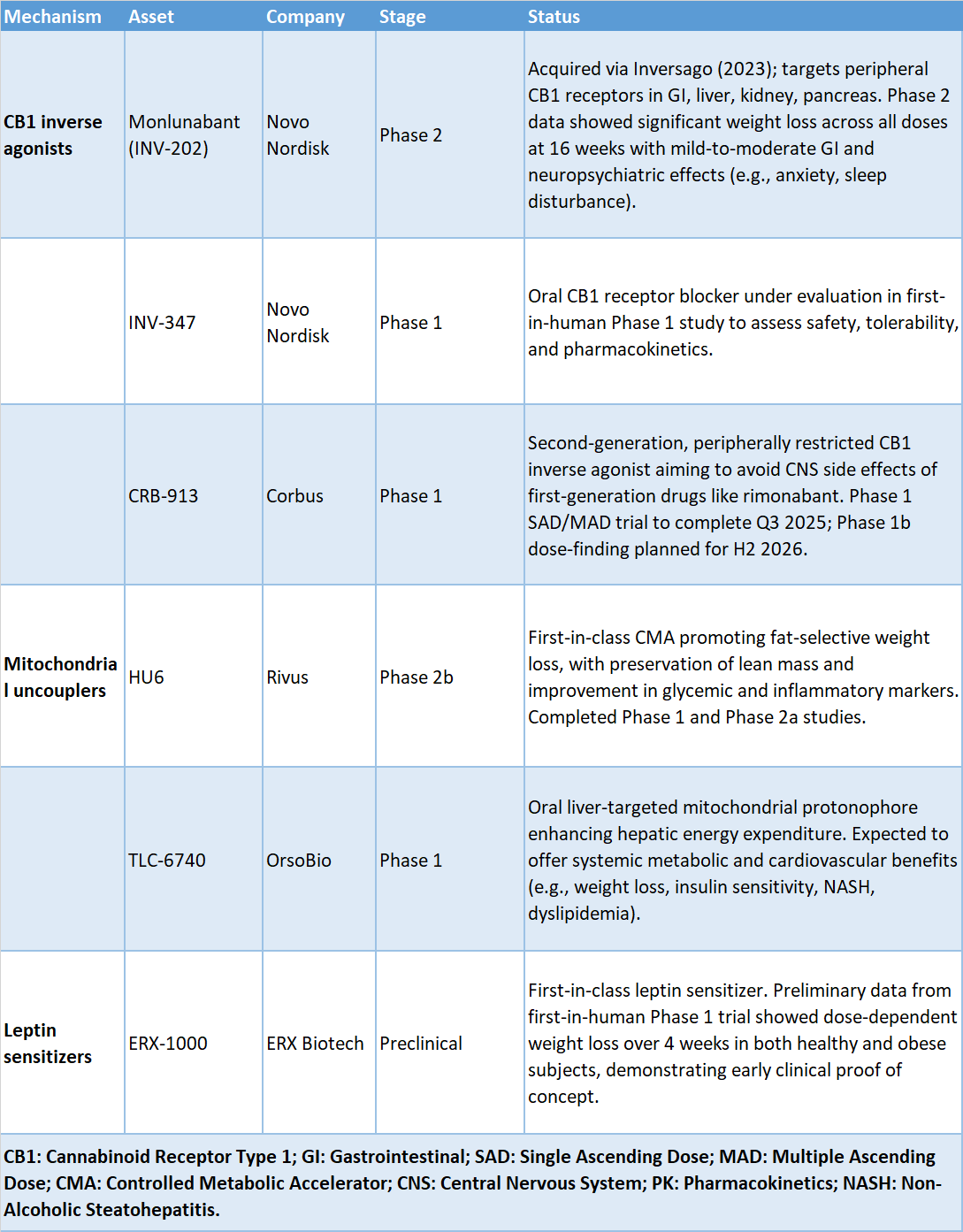Neeta RatanghayraAugust 22, 2025
Tag: Small Molecule Drugs , Obesity , Oral Peptides
Obesity remains one of the most pressing public health crises of the current time. Beyond the difficulty of achieving weight loss, long-term weight maintenance remains a major hurdle - data shows that up to 80% of lost weight is regained within five years. This not only undermines individual outcomes but also intensifies the burden of obesity-related comorbidities, including type 2 diabetes, cardiovascular disease, and certain cancers.
Pharmacotherapy has emerged as a critical tool in addressing obesity, with GLP-1 receptor agonists (GLP-1 RAs) like semaglutide and tirzepatide demonstrating impressive efficacy. However, these peptide-based injectables carry significant challenges:
Gastrointestinal side effects (e.g., nausea, vomiting)
Neuropsychiatric symptoms (e.g., anxiety, irritability)
Weight regain on discontinuation
Inconvenient administration (requiring subcutaneous injection)
Complex and costly manufacturing
With the global obesity drug market projected to reach $131 billion by 2028, there is a critical need for scalable, tolerable, and accessible alternatives. Oral small-molecule drugs offer a promising solution.
Small-molecule oral obesity therapies represent a transformative opportunity to address the limitations of peptide-based injectables and better support long-term, scalable obesity management. Their unique attributes make them highly suited to overcoming key clinical, economic, and supply-related challenges:
Unlike peptide-based GLP-1 receptor agonists that require injection due to degradation in the gastrointestinal tract, small molecules can be delivered orally. This eliminates injection-related barriers such as needle aversion and cold-chain logistics, thereby improving patient adherence, expanding access, and supporting broader adoption of pharmacologic obesity treatment.
Many small-molecule candidates in late-stage development, such as orforglipron, do not require food or water restrictions. This flexibility simplifies treatment regimens, avoids the fasting-related compliance challenges common with oral peptides, and reduces patient burden, an important factor for chronic therapies where convenience strongly influences persistence.
Small molecules are typically more stable under varying environmental conditions. This enables longer shelf life, simplifies storage and transport, and reduces cold-chain dependence, crucial for equitable access across diverse healthcare settings, including low-resource environments.
Small molecules often exhibit superior bioavailability compared to oral peptides, allowing effective therapeutic concentrations at lower doses. This not only improves cost efficiency but may also reduce the incidence and severity of side effects such as nausea or gastrointestinal discomfort, key issues that currently limit the tolerability of many GLP-1-based therapies.
Due to their pharmacologic versatility, small molecules are easily co-formulated with other agents targeting different aspects of obesity or cardiometabolic disease, such as muscle-preserving therapies, lipid-lowering agents, or glycemic control drugs. This supports a more personalized, comprehensive approach to weight management and comorbidity reduction.
Small molecules are synthesized via well-established chemical processes, which are far less complex and cost-effective than the recombinant methods required to produce peptide-based biologics. This manufacturing efficiency enables faster production scale-up, supports sustainable pricing models, and helps alleviate affordability and supply constraints - two of the biggest barriers to broad adoption in both private and public health systems.
Together, these advantages position small-molecule obesity therapies not only as a practical solution for long-term weight maintenance, addressing the reality that up to 80% of lost weight is regained within five years, but also as a scalable, economically viable public health intervention capable of transforming access to obesity care globally.
Oral small molecules may play multiple roles across the obesity treatment spectrum:
Induction therapy
For patients seeking non-injectable, first-line options with fewer side effects.
May offer meaningful weight loss with greater tolerability.
Maintenance therapy
Helps sustain weight loss and cardiometabolic benefits after injectable GLP-1 induction.
Offers lower cost, easier adherence, and broader scalability for long-term use.

The next wave of obesity therapies is targeting mechanisms beyond incretin mimetics, aiming for improved weight quality (e.g., fat loss with muscle preservation), tolerability, and durability:

These mechanisms are orthogonal to GLP-1, enabling synergistic combination strategies that may improve both efficacy and tolerability.

Small Molecule Drugs for Obesity
With nearly 60% of the oral obesity drug pipeline composed of small molecules, compared to 32% peptides, there’s clear momentum behind this modality. The combination of clinical efficacy, patient convenience, scalable manufacturing, and economic feasibility makes small molecules uniquely positioned to meet the demands of global obesity care.
They offer the potential to:
Extend the durability of weight loss and cardiometabolic improvements
Reduce barriers to access for millions of patients worldwide
Enable multi-target regimens for more personalized treatment
Lower healthcare system costs while improving long-term outcomes
As obesity pharmacotherapy evolves, oral small-molecule drugs are poised to reshape the standard of care, not just as alternatives to injectables, but as strategic enablers of lifelong obesity management. Their advantages are transformative.
By unlocking a scalable, accessible, and sustainable path to long-term weight control, small molecules could define the next era in obesity treatment.
1.Melson E, Ashraf U, Papamargaritis D, Davies MJ. What is the pipeline for future medications for obesity?. Int J Obes (Lond). 2025;49(3):433-451. doi:10.1038/s41366-024-01473-y
2.Gangwal A, Lavecchia A. Artificial intelligence in anti-obesity drug discovery: unlocking next-generation therapeutics. Drug Discov Today. 2025;30(4):104333. doi:10.1016/j.drudis.2025.104333
3.IQVIA. Oral obesity therapies holding the key to the future. IQVIA Blog. Published October 2024. Accessed June 9, 2025. https://www.iqvia.com/locations/emea/blogs/2024/10/oral-obesity-therapies-holding-the-key-to-the-future
4.Rachel Brazil. Companies seek a second obesity treatment revolution—in pill form. Science. Published online 2024. Accessed June 9, 2025. https://www.science.org/content/article/companies-seek-second-obesity-treatment-revolution-pill-form
Freelance Medical Writer
Neeta Ratanghayra is a freelance medical writer, who creates quality medical content for Pharma and healthcare industries. A Master’s degree in Pharmacy and a strong passion for writing made her venture into the world of medical writing. She believes that effective content forms the media through which innovations and developments in pharma/healthcare can be communicated to the world.



Contact Us
Tel: (+86) 400 610 1188
WhatsApp/Telegram/Wechat: +86 13621645194
+86 15021993094
Follow Us:




 Pharma Sources Insight July 2025
Pharma Sources Insight July 2025


